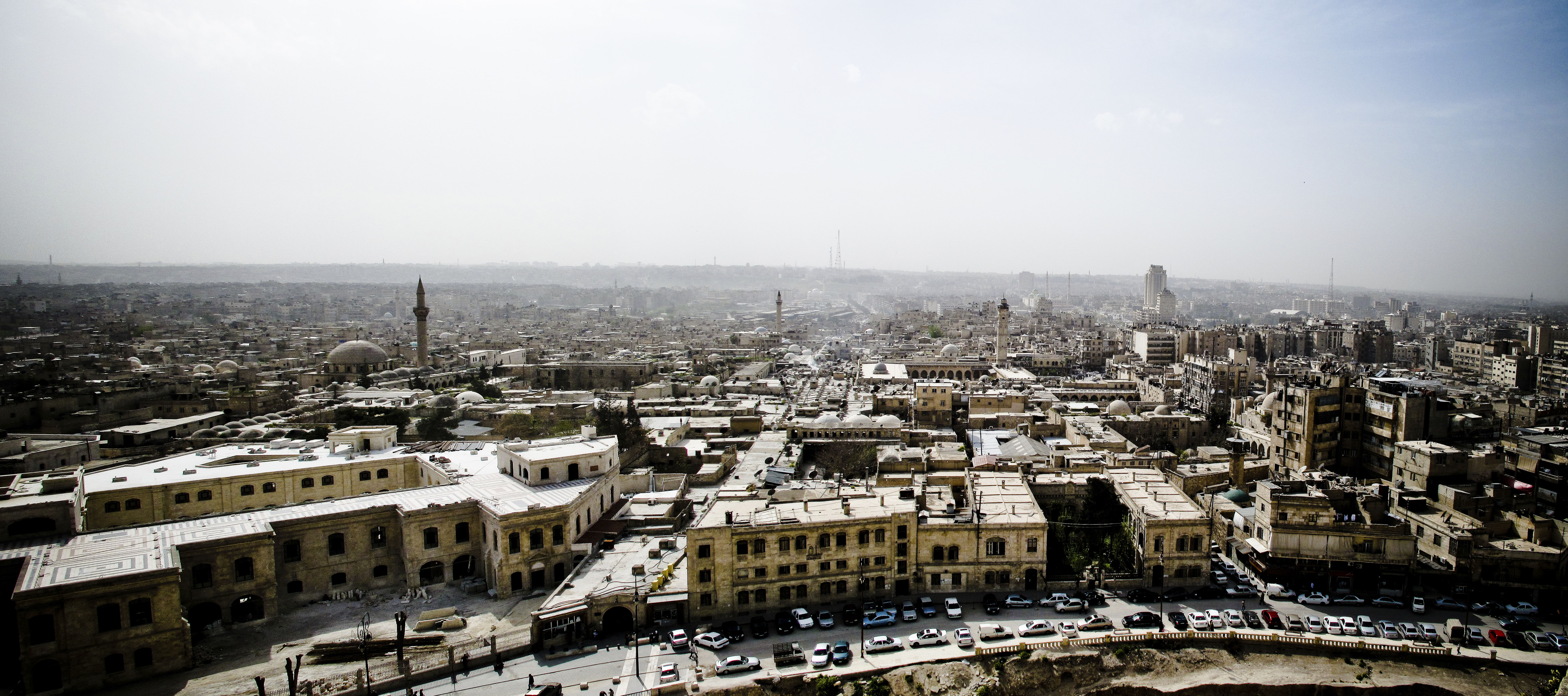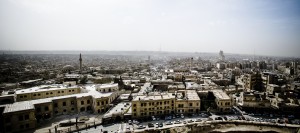The fundamentals of the Syrian conflict


The Syrian conflict, which began as an uprising against President Bashir al-Assad’s long-standing regime, has developed into an immensely complicated and deadly civil war with no end in sight.
As a political science student with a Middle Eastern background, I am often approached by people asking, “What is going on in Syria?” The answer they are looking for is a sound bite, a couple sentences explaining the whole situation. However, the complexities of the conflict and the sheer number of groups involved make a succinct answer impossible.
Broadly speaking, there are two sides to the conflict: the regime and the opposition. Within each side there are armed groups, foreign governments and a divided nation of Syrians that make defining two distinct sides very difficult. Edmund Pries, a professor of Global Studies at Wilfrid Laurier University, acknowledged the challenge of describing the situation on the ground and identifying a possible solution.
“With Assad and his Alawite minority and Shiite Hezbollah allies [now also with temporary alliances from Syrian Christians and Syrian Kurds] on the one side,” he explained, “and the predominantly Sunni FSA, SILF, SIF and ISIS and their associated bands of fighters on the other — and each side, but especially the latter, struggling with internal factional fighting — this will be a difficult conflict to resolve.”
Even this, he makes clear, is an oversimplification as many of these umbrella groups represent dozens of sub-groups.
The conflict itself was a surprise to Syrians and foreign observers. For a conflict mired in complexity and power politics, it began inconspicuously.
Graduate of the Balsillie School of International Affairs (BSIA)’s MIPP Program and Syrian native Maissaa Almustafa marked the beginning of the conflict as March 15, 2011.
On this day, young men defaced government property with graffiti and were taken into custody by government security.
Almustafa recalled that security forces were disrespectful to the families of the young men and it was up to Assad to go make amends. Almustafa explained, “people at that time were expecting Assad to take the initiative to go there and do the right thing – everybody was shocked to see the security forces cracking down on peaceful protests in the South.”
That was the spark. Protests began to pop up more frequently, and the government, worried about the possibility of an uprising as seen in Egypt or Tunisia, cracked down violently.
After roughly six months of relatively peaceful protests, violence broke out between armed groups and government troops.
Due to Syria’s regional adversaries like Saudi Arabia, weapons were readily available for the opposition. “The regime’s reaction and the way they used force,” Mustafa added, “forced people to arm themselves and those arms were there waiting because of Syria’s enemies waiting for this to happen.”
Since then, armed groups have increased drastically and Iran and Hezbollah (a Shiite Lebanese militia) has entered the conflict in support of Assad’s regime. It is unknown how many foreign fighters from the region have entered the conflict, but estimates, according to Pries, hover around 6,000.
With events on the ground changing so rapidly, Gavin Brockett, professor of Middle Eastern and Islamic history, suggested a more historical approach, which also addresses how and why the conflict began. What is happening now is important but in order to understand the conflict, it is beneficial to understand why it is happening as well.
Brockett emphasized the history’s role in the current conflict, most notable the colonial legacy of French mandate that placed former Ottoman provinces together to form countries. The reckless creation of countries like Syria contributes to the sectarian nature of the conflict.
Even if a solution is reached, how can these various religious, ethnic and ideological groups co-exist in such a fractured society.
According to Brockett, “In many ways this is the most important question.”
He further stated, “Whether there is any country called Syria at the end of this process – I wouldn’t bet on it. Nor would I think we have seen the worst of the bloodshed. It’s truly a catastrophic and disastrous situation.”
As is the case in most civil wars, civilians caught in the crossfire are suffering. Almustafa pointed out that the conflict is about more than ideology.”
You have communities that are being displaced and destroyed. It’s not only a political conflict – it’s about the social fabric.”
Almustafa also reflected on the inability for either side in the conflict to claim moral authority in regards to protecting Syrians.
Interventions claim that the regime, due to its targeting of civilians, has lost all ability to protect its people.
However, the same applied to the opposition as she claimed, “they are pushing Syrian people into a conflict they can’t win which is more dangerous than facing a dictatorship.”
With millions displaced and over 100,000 Syrians dead, protecting innocent lives hopefully will become more of a priority for both sides. But as Brockett pointed out, this conflict is far from over and the worst may be very well yet to come.
—————-
The Stakeholders:
Russia: Putin:
Russia and Syria have diplomatic history dating back to the nineteeth century.
During the Cold War era, the Soviet Union supplied substantial military aid to Syria and the relationship endured the collapse of the Soviet Union.
Today, Russia has vocally supported a political solution to the conflict and wants the issue decided domestically, rather than through foreign intervention.
Russia has been a major supplier of arms and political muscle on the international stage to the Assad regime and their supporters.
Brockett explained that Russia is trying to retain its influence and geopolitical power in the region, as Syria is its last real place of influence.
Russian interest lies in its arms exports business (it supplies Syrian weapons) and in the strategic Port of Tartus which is home to a Russian naval facility. Russia, despite its claims of neutrality and reason, need to keep the regime in power in order to protect its economic interest and political influence in Middle Eastern affairs. So far, the strategy seems to be working.
Iran/Hezbollah: Nasrallah
Iran and Hezbollah have a similar stake in the Syrian conflict. Both represent Shiite Muslim interests, a group that is a minority in the global Muslim community as well as in the Middle East. Hezbollah is the Shiite political, social and military group known for guarding the Lebanese Southern border with Israel while also providing social services to many Lebanese communities.
Iran and Hezbollah have both provided support to Assad by sending weaponry and fighters to combat the opposition militias and al-Qaeda affiliated groups. Iran and Hezbollah are both preparing for post-Assad Syria by building militia networks in the state, most notably in port towns that impact the flow of arms between Syria, Iran and Hezbollah.
There is speculation, especially in Lebanon, that the radical Sunni group, Jabhat al-Nusra, may target Lebanon after Assad falls.
Iran and Hezbollah would prefer the conflict remain in Syria and not destabilize the region any further. Iran and Hezbollah have a huge stake in this conflict as Assad is an ally of both parties. If he falls, the Shiites will have lost significant influence and risk further conflict with extremist Sunni groups in Syria.
Syria: Bashar al-Assad
Assad has served as President since 2000 when he took over for his father who led Syria for three decades.
He was initially viewed as a potential reformer, but economic reforms were slow and Syria remained largely controlled by the regime’s security apparatus.
The government, perhaps in fear of a Syrian version of the Arab Spring, cracked down hard on initial protests which in turn sparked a more intense revolution.
Government forces have been brutally violent and contributed to the civilian casualties of the conflict. Assad has framed the conflict as a government struggling to combat foreign intervention and domestic terrorism.
Assad has hung on longer than other regional leaders because extremist Sunni elements have pushed minority groups in Syria to back the government and prevented Western nations to sufficiently arm the Free Syrian Army.
According to Maissaa Almustafa, a MIPP graduate and Syrian native, “The regime is playing the game really well. It knows how to keep support and stay alive.”
Thus far, Assad’s main strategy has been to emphasize the terrorist or extremist element in those trying to overthrow him and rely on Russia for international support.
USA: Obama
The US is no friend of the Assad regime, but is struggling to support an opposition, which is becoming increasingly radicalized. For strategic reasons, the US would love to destabilize the Iran-Syria-Hezbollah triangle that threatens American interests in the region.
The West tried to push a narrative of a democratic uprising rising up against an oppressive regime, but over time that narrative was debunked by the presence of groups like Jabhat al-Nusra.
The US has made mistakes before in arming rebel groups in proxy wars. Gavin Brockett, professor of Middle Eastern and Islamic history at Laurier, is certain that the American arming of Mujahideen forces (which eventually developed into the Taliban) against the occupying Soviets is very much in the back of their mind.
The United States, he explained, “are very hesitant to the arm the Syrian opposition for fear that the opposition will then use those arms in other ways that are not suitable to American interests.” The extremist elements of the opposition have made it impossible to consistently arm rebel groups in fear of weapons falling into the wrong hands.
Free Syrian Army
The FSA is the armed opposition in Syria comprised of volunteers and defected Syrian Armed Forces personnel.
There is deep division within the opposition as dozens of groups with differing ambitions, goals and tactics wage war on the regime, and sometimes on each other.
While militia tactics can help combat traditional armed forces like the Syrian army, it can also be a glaring weakness. Brockett added, “The lack of unity among the opposition has enabled Assad to hang on.”
The strategy thus far has been to spread the military thin, focus on urban centres mainly in central Syria and promote defection from the Syrian Army into their ranks.
Rebels have been accused of kidnappings, torture, executions, and recruiting child soldiers.
FSA at times has had an extremely controversial relationship with Jabhat al-Nusra as they have worked together to achieve common goals but also against each other when captured territory is available.
The FSA hopes to form a united front and improve organization throughout the country.
It also has been working to convince the West to supply arms to keep up with more radical groups and combat the government. However, as radical groups become more prominent, securing an arms deal seems less likely.
Jabhat al-Nusra
There are many groups fighting against the government with extremist elements, however the most notable and most successful group is the Islamic rebel group Jabhat al-Nusra. It is the most experienced, well trained and well armed of the resistance groups and has thus been effective in combating government forces.
Jabhat al-Nusra is considered an offset of al-Qaeda and is regarded by the West as a terrorist group. The group is looking to implement its own version of Sharia in the areas it controls.
Because they are well armed and funded, they can recruit more easily and are an appealing option for those looking to fight in the revolution.
Communities targeted by government forces have enjoyed economic support from the al-Nusra front which can provide families with incomes, safety and medicine. They are winning the hearts and minds so if Assad fails, it may translate to allegiance.
The group has a common enemy (Assad) with the Free Syrian Army, but tactics and visions for a post-Assad Syria are extremely different. Jabhat al-Nusra is unique because its successes are not good for the government or the opposition.

